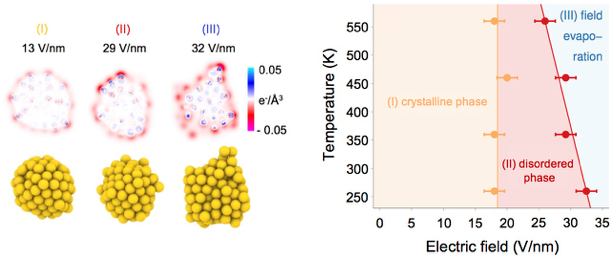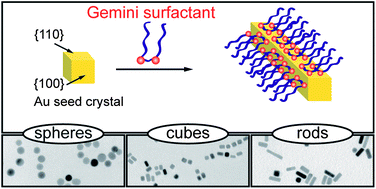Electric-field-controlled reversible order-disorder switching of a metal tip surface
L. de Knoop,
M. J. Kuisma,
J. Löfgren,
K. Lodewijks,
M. Thuvander,
P. Erhart,
A. Dmitriev,
and
E. Olsson
Physical Review Materials 2, 085006
(2018)
doi: 10.1103/PhysRevMaterials.2.085006
Download PDF

While it is well established that elevated temperatures can induce surface roughening of metal surfaces, the effect of a high electric field on the atomic structure at ambient temperature has not been investigated in detail. Here we show with atomic resolution using in situ transmission electron microscopy how intense electric fields induce reversible switching between perfect crystalline and disordered phases of gold surfaces at room temperature. Ab initio molecular-dynamics simulations reveal that the mechanism behind the structural change can be attributed to a vanishing energy cost in forming surface defects in high electric fields. Our results demonstrate how surface processes can be directly controlled at the atomic scale by an externally applied electric field, which promotes an effective decoupling of the topmost surface layers from the underlying bulk. This opens up opportunities for development of active nanodevices in, e.g., nanophotonics and field-effect transistor technology as well as fundamental research in materials characterization and of yet unexplored dynamically controlled low-dimensional phases of matter.
The phenomenon revealed in this paper has been populary described as “melting gold at room temperature” and has been highlighted in a press release from Chalmers. The story has also been picked up by a couple of news outlets, including e.g., Newsweek (US), SVT (Sweden), Ny Teknik (Sweden), Svenska Dagbladet (Sweden), and Focus Online (Germany).
 (illustration: Alexander Ericson)
(illustration: Alexander Ericson)



